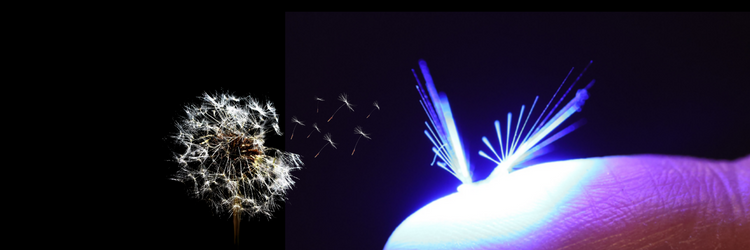
Stimuli-responsive polymers, materials capable of altering their chemical and/or physical properties in response to external stimuli, have changed the game in robotics. Substances like dielectric elastomers, hydrogels (spider warning), shape memory polymers, liquid crystal elastomers, and magnetic materials are broadening robots’ abilities on the micro and macro scale. From soft robots that can detect damage and heal themselves to materials with a form of adaptive memory, materials research for robots is booming.
Researchers with the Light Robots group at Tampere University are taking inspiration from dandelion seeds and are creating a creature from our folk tales and tabletop role-playing games (ttrpgs): FAIRY – Flying Aero-robots based on Light Responsive Materials Assembly. Hao Zeng, Academy Research Fellow and the group leader, and Jianfeng Yang, a doctoral researcher, and their team have developed a polymer-assembly robot that flies on the wind and is controllable with light.
“Superior to its natural counterparts, this artificial seed is equipped with a soft actuator. The actuator is made of light-responsive liquid crystalline elastomer, which induces opening or closing actions of the bristles upon visible light excitation,” explains Hao Zeng.
Their fairy has several biomimetic features due to its high porosity (0.95) and weight (1.2 mg), allowing it to float long distances on the air currents using stable separated vortex ring generation. It can adapt to wind direction and force by changing its shape. The researchers use light, such as laser beams or LEDs, to power and control the fairy, causing it to land, take off, and change its shape.
The researchers will now focus on improving the material sensitivity to allow use in sunlight. They will also upscale the structure so FAIRY can carry micro-electronic devices like GPS, sensors, and biochemical compounds. Finally, the team is looking at how they can reuse the devices and make them biodegradable.
“It sounds like science fiction, but the proof-of-concept experiments included in our research show that the robot we have developed provides an important step towards realistic applications suitable for artificial pollination,” Zeng says.
With climate change endangering our pollinators and food production, this dandelion-fluff robot may assist our butterflies and bees and keep us all fed.
